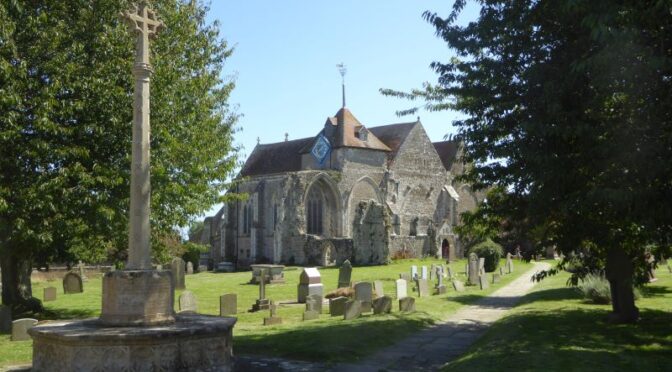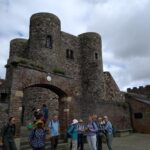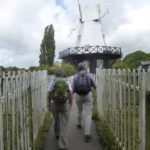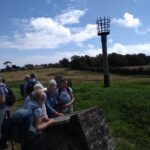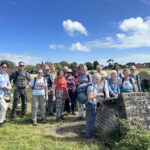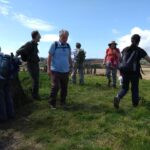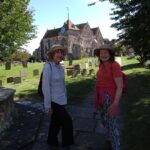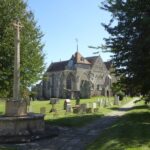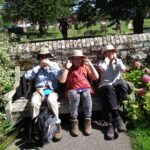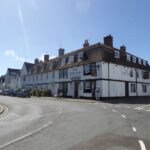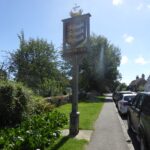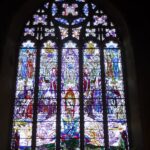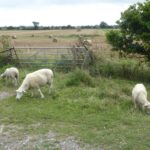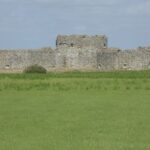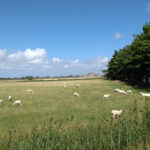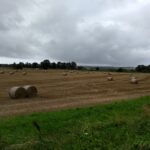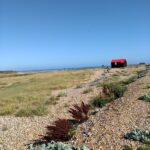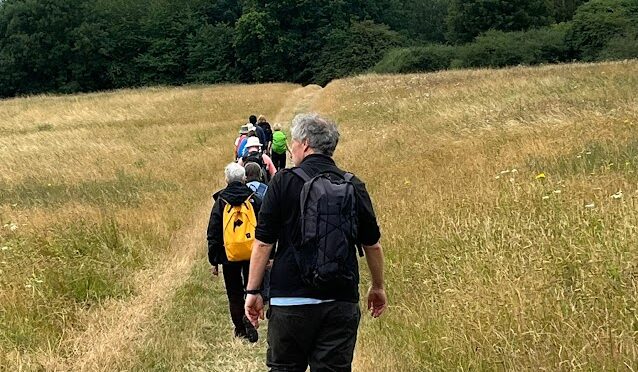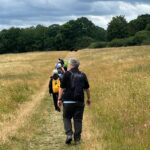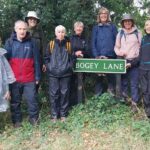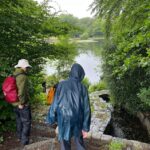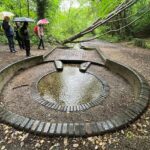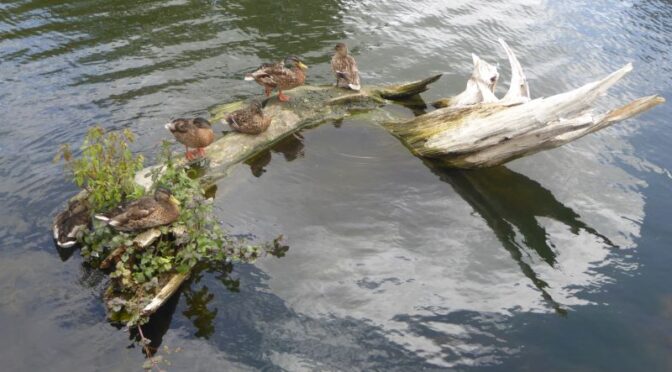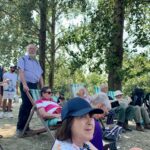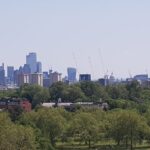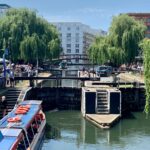Click here for our winter 2023/2024 programme
All posts by Gillian
CINQUE PORTS WALK – 19 AUGUST
Report by Jill Forgham
We had a wonderful day yesterday. According to Alison’s app she did 23 km, oof! It was beautiful weather with a good breeze and there were 17 of us on the walk. We boarded a very packed HS1 train to Ashford International (full of people heading to the beach at Margate) and then all crammed onto a tiny train 3 stops to Rye (I had to sit in the luggage rack as there was no room left to stand in the aisles).
We did a quick tour of the quaint streets of Rye (very pretty) and up to the castle for a viewpoint and then dropped down to start our hike through fields of corn (scenes very reminiscent of Paul Nash, who had lived in the town), picking blackberries along the way as we headed across country to Winchelsea. We arrived at the New Inn in time for lunch and explored the gorgeous, partly ruined church (where Millais did two paintings) and in the churchyard, found the gravestone of Spike Milligan.
We headed out through one of the ancient town gates (13thc) and then crossed vibrant green fields with hundreds of pristine lambs grazing, heading no doubt to be salt marsh lamb fairly soon. With Camber Castle ruins on the horizon, it was glorious.
Finally we got to Rye Harbour, a good 40 minutes schlep beyond the town and now part of a nature reserve and bird sanctuary. We could see across to Camber Sands and the silhouette of Dungeness power station on the horizon, and we all collapsed into the Discovery Centre for a very welcome cup of tea and cake.
Jill. Photos by Jill, Stuart and Lan
LONDON LOOP: PETTS WOOD TO WEST WICKHAM – 22 JULY
Lovely walk from Petts Wood to West Wickham, despite the drizzle, through wooded areas, meadows, a nature reserve and Elms Country Park where we stopped for lunch near the Green Roof Cafe there.
After lunch we traversed the site of a great mansion which had burned down in 1967 and, after a bit of climbing, stopped to view the remains of the Wilberforce Oak which has an interesting history (bill calling for the abolition of slavery discussed here)
Onwards to The Keston ponds which were teaming with life, including lots of cute ducklings being closely guarded by parents. As Hayes station didn’t have trains running, we stood under a bus shelter, dodging drips from leaks in the roof, until the 353 arrived and took us on the 15 min journey to Orpington station, a journey Geoffrey was quite familiar with, having lived in that area many years ago. After a short wait we were off on the train towards London.
Jackie. Photos by Hilary and Ian
HENLEY CIRCULAR – 15 JULY
I am so thankful that the weather was no-where near as dire as predicted for my Henley walk on 15th July. We all assembled at Henley station (seventeen of us) via bus, car, the Liz line and GWR. I gave a short talk and then we set off over the bridge and then along the east side of the Thames. Most of the grandstands and hospitality tents and general what-not were still there after the annual regatta a couple of weeks before and were slowly being dismantled. Inwardly I am conflicted between feelings of resentment because I don’t belong to the privileged social class that goes to the regatta and the fact it looks like it was a lot of fun. Anyway it’s a lovely walk by the river, which is very beautiful and is surrounded by green fields. We pass swans fishing for breakfast and Canadian geese all in a line like we are! The weather is fresh and invigorating. We got to Hambleden Lock more quickly than I expected and after a group photo crossed over the river. This section of the river is very different, no longer gliding serenely along but roaring loudly as it rushes through the weir with us on the bridge a few feet above it. Ducks and geese are feeding happily in the midst of the rushing water. I love this sort of thing, it’s exciting! Continue reading HENLEY CIRCULAR – 15 JULY
ANGEL TO REGENTS PARK – 25 JUNE
On the hottest day of the year to date, eleven Poly Ramblers assembled at the Angel for a leisurely walk to Regents Park. We first wandered through Chapel Market with its variety of stalls before heading to the Regents Canal. We joined its towpath close to the headwall of the Islington Canal Tunnel and walked westwards. We soon came to the Battlebridge Basin which was constructed in 1820 and is now a narrowboat mooring and the home of the London Canal Museum. Battlebridge is the old name for the King’s Cross area which has been transformed in recent years with a plethora of new buildings, bars and restaurants. Of particular interest is Gasholder Park which is housed in the frame of a gasometer constructed in the 1850s. Three similar ones alongside now contain apartments. The next stretch was fairly peaceful but that changed when we reached Camden Lock with crowds visiting the various markets in its vicinity. We stopped here for refreshment at the Ice House Wetherspoons before carrying on to the vicinity of Primrose Hill where we left the canal for lunch at a cafe. Geoffrey joined us here having being delayed on his rail journey from Bedfordshire by signalling problems. Some of our number climbed the hill for its impressive views of the London skyline but the majority decided to stay cool in the shade. For the final part of the walk, we entered Regents Park and headed for the lake and its bandstand. We listened to some jazz numbers by the KIX orchestra before finishing at Baker Street where a few of us felt the need for further refreshment at the Wetherspoons above the station.
Danny
Photos courtesy of Rajesh Patel & Nita Patel


